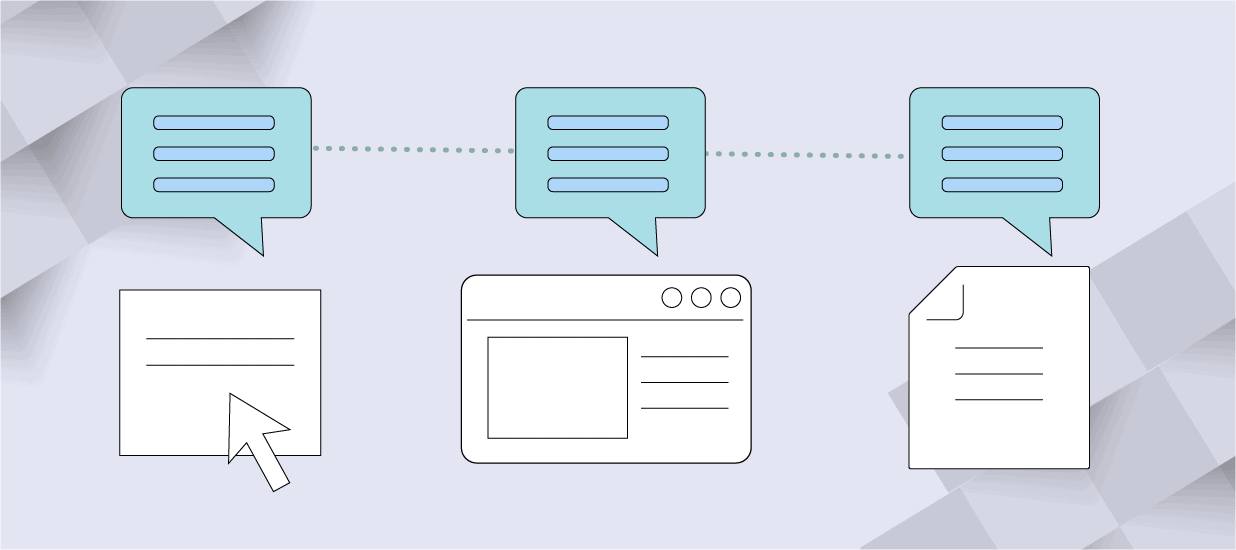6 minute read
What is a product message map and how do you make one? A seasoned product expert explains why they are important, three key elements they need and how you can create winning product maps every time.
Indulge me for a minute. Before you read this article about creating product message maps, go to your company’s website and find the page for your flagship product. Jot down the key message headings. Now open the datasheet for that product and compare the message headings to those you wrote down. Do they match? Are they even close?
If your company is like most, the answer is “no.” That’s because few companies take the time to create product message maps and apply them to their marketing communications. Instead, they essentially reinvent the wheel with each new content piece. This results in disjointed, inconsistent messages and confused buyers.
The answer is product message maps, and if you wonder what those are, why they are important and how to create them, you’re in the right place.
Product Message Map Basics
Exactly what are product message maps? The most basic definition of a product message map is an internal document that acts as a messaging structure for product-related marketing communications. This includes web content, blogs, product collateral, news announcements, white papers, presentations, webinars and product videos. A message map is essentially the source of truth for the product.
Product marketing typically owns product message maps. And by creating them, they simplify the process of developing product-related content by removing the need and temptation to diverge from the agreed-upon messaging. The goal of product message maps is consistency. By communicating the same overarching themes and supporting points across all marketing communications, you constantly reinforce these key product messages to your core audiences. This consistency strengthens your product positioning and minimizes misunderstandings and confusion.
Unfortunately, there’s no universal message map template or structure for a product message map. If you ask ten product marketers about message maps, you are likely to get eleven different responses. There is good news, though; all great product message maps do contain the following three components.
Three Parts of Product Message Maps
Unfortunately, there’s no universal message map template or structure for a product message map. If you ask ten product marketers about message maps, you are likely to get eleven different responses. There is good news, though; all great product message maps do contain the following three components.
Message Pillars
These are the most essential ingredients of your product message map. They contain the words or phrases you will use throughout your marketing communications to summarize your product’s core value propositions. Three message pillars are ideal because things that come in threes are usually more memorable. Don’t believe me? Google “rule of three” to learn more. Four message pillars are acceptable; two are too few, and five are too many.
Product Proof Points
These statements validate and expand on your message pillars. Proof points often relate to product features or attributes but may also pertain to third-party tests, industry awards, media reviews, or product certifications. They should appear in the decreasing order of importance that they impact revenue. When you develop content for multiple marketing communications, you can rephrase your proof points so that no two marketing communications read exactly the same while still providing consistent messaging.
Product Positioning Statements
These typically include a product positioning phrase, supporting sentence and paragraph. In the case of a one-product company, they may evolve into the corporate tagline or the standardized description of the company that appears at the end of press releases. More broadly, companies can use this information for subheadings on product brochures, within executive summaries of white papers, or as product descriptions for award nominations.
Message Map Benefits
When you create and consistently use a product message map, you reap a variety of benefits. First, it reinforces key messages. By repeating your message pillars and selected proof points in a variety of marketing communications, you reinforce your product’s key value propositions with customers, partners, journalists, analysts, and even your sales team. It is especially beneficial to prospects as they try to understand how your product compares to the competition. In the end, when well executed, a product message map can help increase your win rate.
Next, a product message map will improve your understanding of the product, but this comes with a provision. If the message map is succinct and steers away from the typical marketing hype, your product’s most compelling attributes will bubble up to the top. This will ensure your audience gains a positive impression of your product in less time, reducing sales cycles. If you fall into the fluff and hype trap, however, you will miss out on this benefit.
Finally, you will save time and effort. The person who develops content for your website is often different from the one who creates the product datasheet. Still others may develop content for white papers, presentations, and other marketing communications. With a product message map in place, everyone is singing from the same sheet of music, reinforcing consistent message pillars and underlying proof points. And because everyone is using the same outline, it helps avoid expensive, time-consuming rework, even when you use outside agencies. At the end of the day, creating marketing communications based on well-constructed product message maps will help increase win rates, reduce sales cycles and significantly reduce content-development costs.
Sounds great, doesn’t it? So, how do you create a solid product message map that gets and keeps everyone on the same page?
H2: Product Message Map Creation
Building effective product message maps is a team effort that requires a lot of work. But when you are finished, the benefits are well worth the effort.
Before creating your product message map, it’s important to dedicate sufficient time to preparation and documentation. The following list will guide you through this phase; skipping it could lead to frustration and leave you feeling unprepared.
Product information: Category, components/features, typical use cases, unique advantages (e.g., first, best, only), and potential buyer objections
Target buyers: Buyer personas, customer needs and challenges, target verticals, target organization size, and target buyer job titles
Competitive landscape: Names of competitive companies and their products, competitor advantages and disadvantages, and data from customer win/loss interviews
The Product Messaging Workshop Phase
After you have completed the preparation stage, it’s time to start building your product messaging map. Set aside a full day and book a meeting room, preferably off-site to minimize interruptions, for you and six to eight colleagues. You will want to have product management, product marketing, sales, and development represented during this workshop. The goal is for them to review and agree on the relevance of the information you aggregated during the preparation phase. Use this information as the basis of a brainstorming session on candidate message pillars and underlying proof points. Ultimately, you want to reach a consensus on three or four message pillars.
Message Map Development Phase
Use the insights from your message workshop and the themes you’ve developed to create the first draft of your product message map. Refine your ideas into concise words or phrases and develop copy-ready proof points. Be sure to list these in order of importance to support each message pillar. This is the draft you will share with colleagues for validation or suggested revisions. By the end of this, you will have your completed product message map. It has been workshopped by various stakeholders, has buy-in and consensus.
Maintenance Phase
It is important to remember that the product message map is a living document. As your product and market change and competing products evolve, you have to update it accordingly. When you update your message map, that update has to be carried through to the underlying marketing communications that rely on it for messaging direction. Additionally, product message maps are also refreshed alongside major product-update launches.
Product Message Map Assistance
With so many ingredients coming into play, crafting product message maps can be complicated. That’s why some companies seek help from outside experts. This is especially helpful for small, overtaxed teams. Here are the three main ways outside help is typically leveraged in the creation of product message maps:
Gather Competitive Intelligence: External experts can provide unbiased insights to fill competitive intelligence gaps and validate assumptions about your product’s advantages and disadvantages.
Conduct Customer Win/Loss Interviews: Third-party facilitators can help gather candid feedback from customers, offering valuable insights to refine message pillars and proof points.
Facilitate Message Map Workshops: Hiring experienced facilitators can accelerate the workshop process, provide fresh perspectives, and ensure the effective development of the message map.
A well-crafted product message map keeps your messaging consistent, clear, and compelling. It aligns teams, simplifies content creation, and strengthens product positioning. Invest the effort upfront, and it will pay dividends across every marketing channel.
Author
-

Steve Piper, a seasoned executive in high-tech marketing and product management with over 30 years of experience, boasts a remarkable track record of success. Having contributed to companies such as Citrix Systems and Sourcefire (acquired by Cisco), Steve has led product marketing and product management with notable achievements. For questions or inquiries, please contact [email protected].
View all posts








